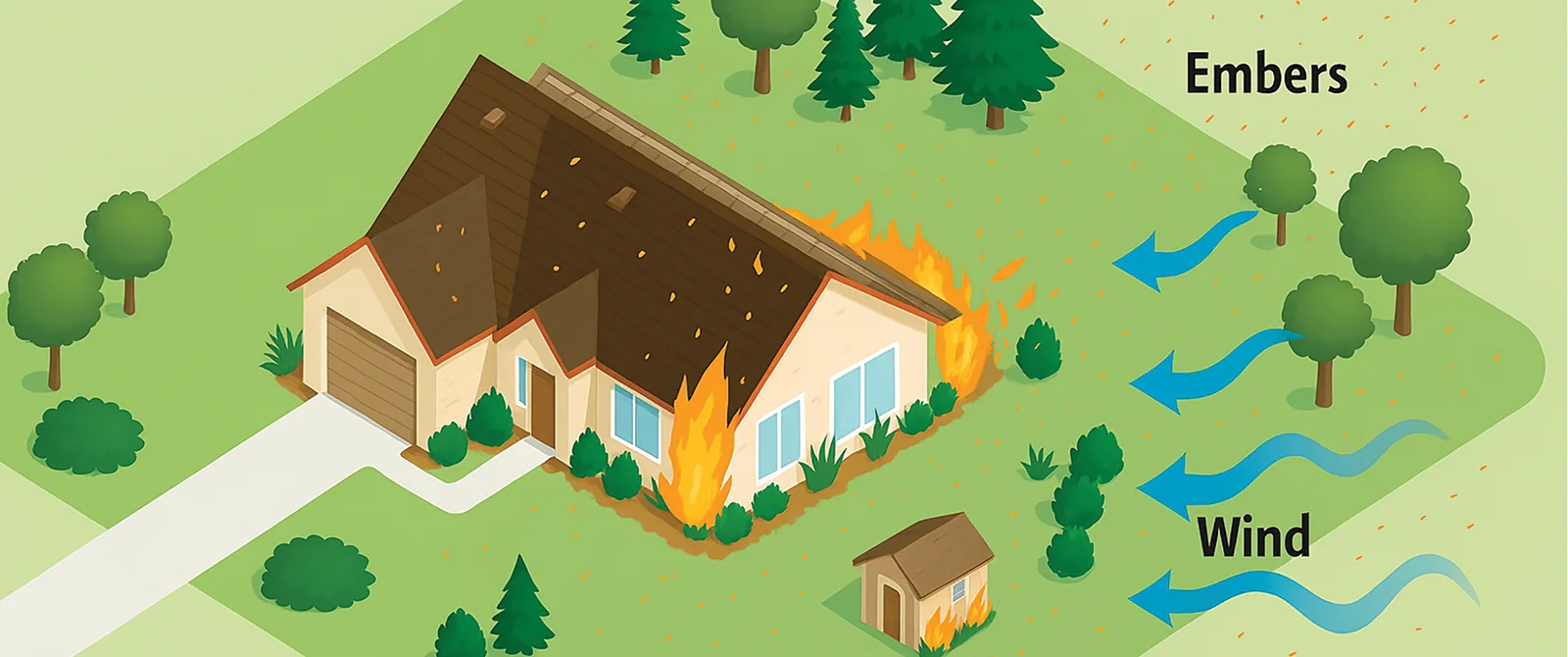Originally published in Lake of the Woods Area News, Volume 55, Number 3, Summer 2025
Cottage fire prevention
for all conditions
By Robert J. Creedon
In recent years, we’ve seen increased instances of wildfires wreaking havoc on communities throughout Canada. Climate change and increasing development in forests and wildlands have been deemed as some of the causes.
With these ever-changing conditions, we all need to make sure we are up on current fire conditions. The Ministry of Natural Resources and Forestry (MNRF) has their signs on the highways and radio announcements on the fire conditions and provide regular updates at ontario.ca/page/forest-fires.
In normal conditions, Ontario’s fire season runs from April 1 to October 31 every year. Outdoor burning is permitted two hours before sunset to two hours after sunset; this doesn’t restrict fires for cooking and heating. More information about burning during these times is available at ontario.ca/page/outdoor-fire-rules-and-permits.
Due to the number of fires occurring in the region during the spring, a fire restriction was issued on Friday, May 16. This meant no open-air burning, including campfires within the identified boundaries. Thanks to the dedicated efforts of firefighters from across the region and more favourable weather conditions, the restriction was lifted on June 13, returning to the No Day Burning Restriction. However, extreme caution should still be used regarding campfires as the region still suffers from drought conditions and needs much more precipitation to reduce the fire hazard. Please observe all restrictions and regulation still in effect. For updates, go to ontario.ca/page/forest-fires#section-4 and ontario.ca/page/outdoor-fire-restrictions.
Reducing fire loads
There are always steps cottagers should consider to minimize their fire load risk. Fire load refers to the potential severity of a fire within a specific area.
Cottagers should look at three types of fire loads and reduce them. There is the fine fire load which is twigs, leaves and basic small fast burning materials. It is easy to catch fire especially burning embers that might float through the air. The main areas to clear are roofs and around the cottage so those embers don’t catch and then light larger fire loads.
Medium fire load is the branches and kindling found in yards. Removal of those dead pieces is easy, reducing fire load, increasing walking safety and helping create that barrier of nothing to support the fire.
The third is the heavy fire load such as downed trees, firewood and dried out dead trees. These should be cleared, especially if dead and drying out.
We are looking to reduce what is more resistant to burning in the summer. Coniferous trees dry out and have needles, which create a fine fire load whereas deciduous trees, with the leaves, hold a lot of moisture and are more resistant in the summer. Those deciduous trees are better for shade and take more to burn.
Around a camp or cottage, there should be a fire break or a no-man’s land that is difficult for the fire to cross. Think of it as those open areas for trailers and cars to park or families to throw footballs or frisbees around.
They should be upwind of your assets that you wish to protect. Keep that sound and privacy barrier between you and the road but open up your yard and take away anything that has lost its moisture and fire resistance. The greater the separation, the more effective any efforts will be to protect your assets.
With this in mind, a shed in the bush for fuels and flammables, away from the cottage, is better storage than under your deck or near your valuable assets.
If you decide to invest in your own pump and sprinkler system, consider some factors. The pump ideally is filled once or twice daily with fuel and just runs until it is out of fuel. Features like large fuel reserves, additional tanks and shut offs should be considered. Set up a place for it to be secured near the water, making sure it can’t fall in or move away from the water source due to vibration from the pump—pumps have been known to shake themselves out of position. Build a place on your dock or its own crib. The pump can be used to water areas early in the season when there is lack of rain, adding resistance to your plants. It can be marked or made available in the time of crisis to protect your property. Remember that the fire load is more fire resistant based on the amount of moisture it holds.
It would also be a good plan to document your arrangements electronically and share with MNRF. Fire information officers for the region are available at ontario.ca/page/forest-fires.
Expect in a big fire not to be able to get to your cottage for your own safety.
Cottages and recreational properties are a large investment. Then, we invest a lot of memories and family occasions into that space. A bit of preparation and intelligent maintenance will go a long way if it is threatened.
Clear that bush for safe burns every year to reduce the fire load. Come up and open your cottages or close them with the extra trip in the spring and fall to handle these details. It’s also a good way to bond and pass on outdoors skills to the younger members of your family as you would pass on this family asset.
Hopefully a bit of care will protect those family memories and the place they were made.
Robert J. Creedon is the fire educator and past chief with Minaki Fire and a teacher. He holds degrees in Criminal Justice/Law Enforcement with Fire Science minor, Sociology and Education. As a volunteer firefighter, his knowledge comes from the courses and experiences of working and living in the region.

Information about the current forest fire danger, forest fire activity and fire restrictions across the province are available at ontario.ca/page/forest-fires.
FireSmart Canada is a national program that helps Canadians increase neighbourhood resilience to wildfire and minimize its negative impacts: firesmartcanada.ca.
